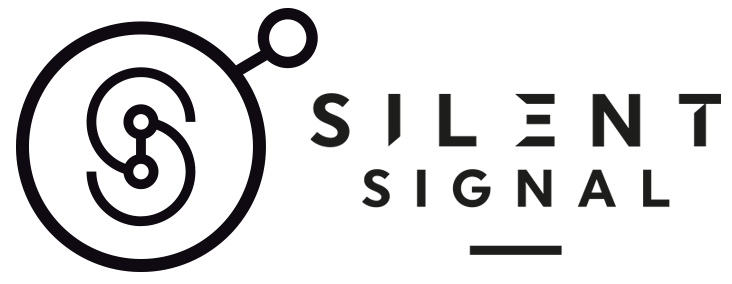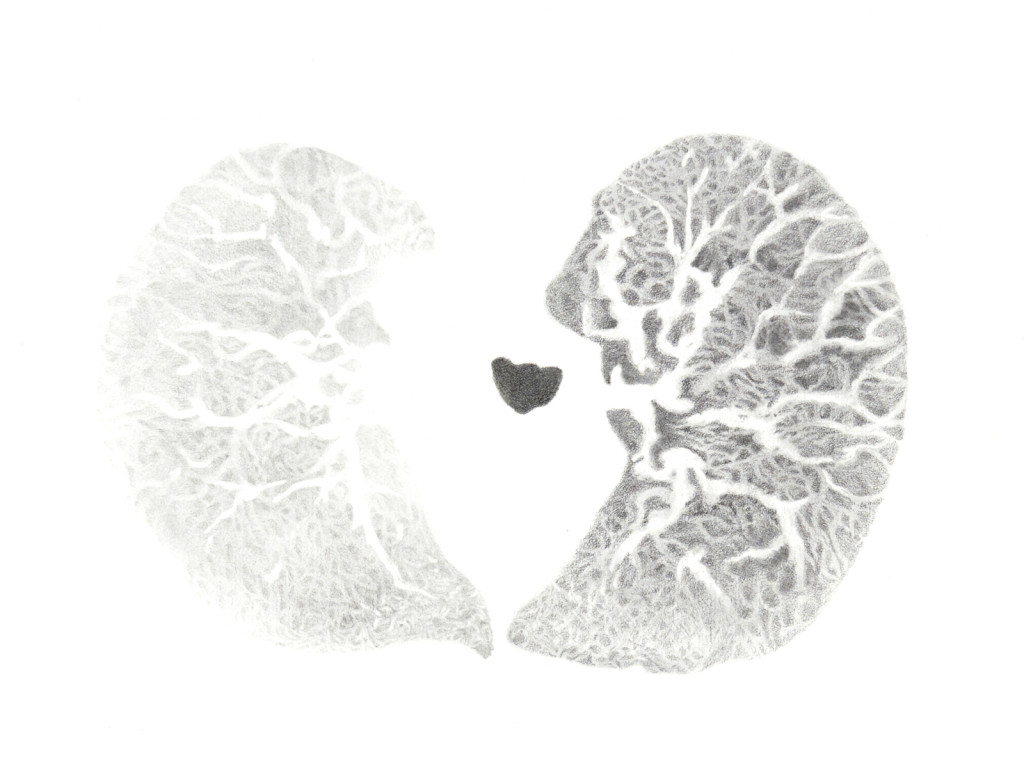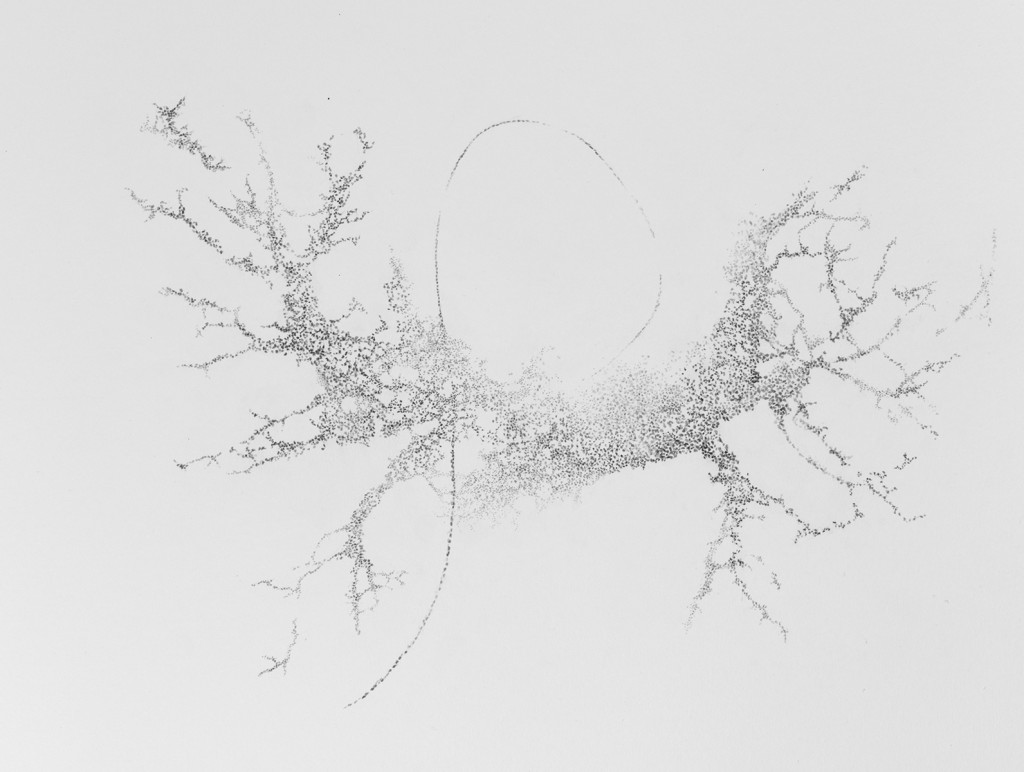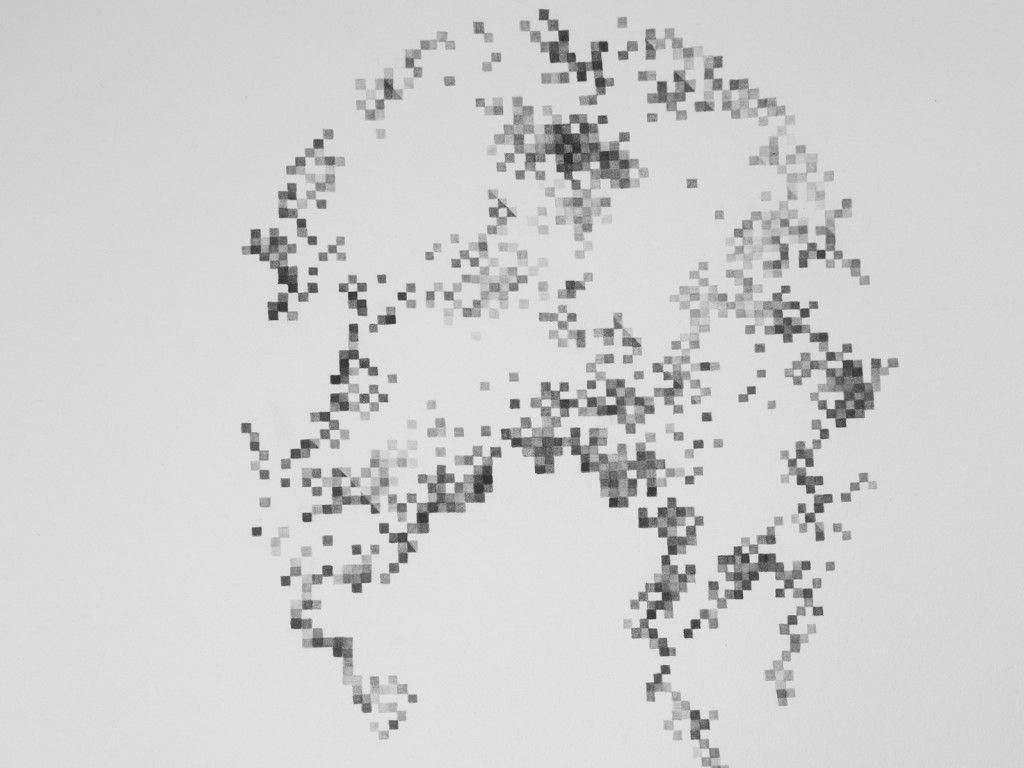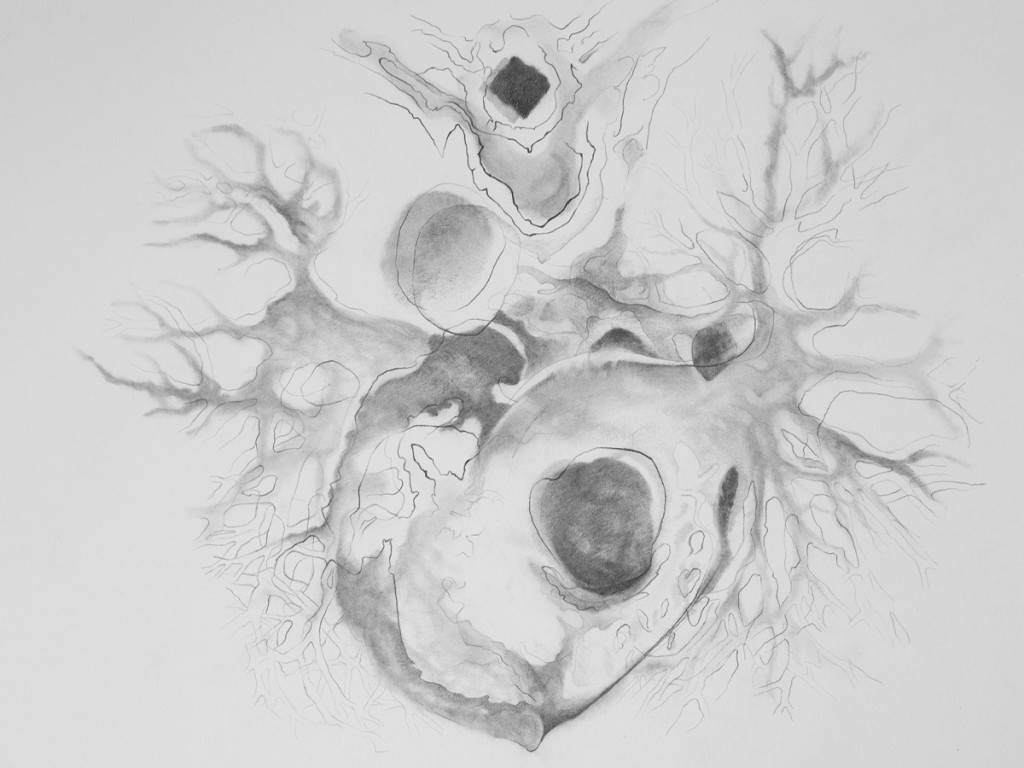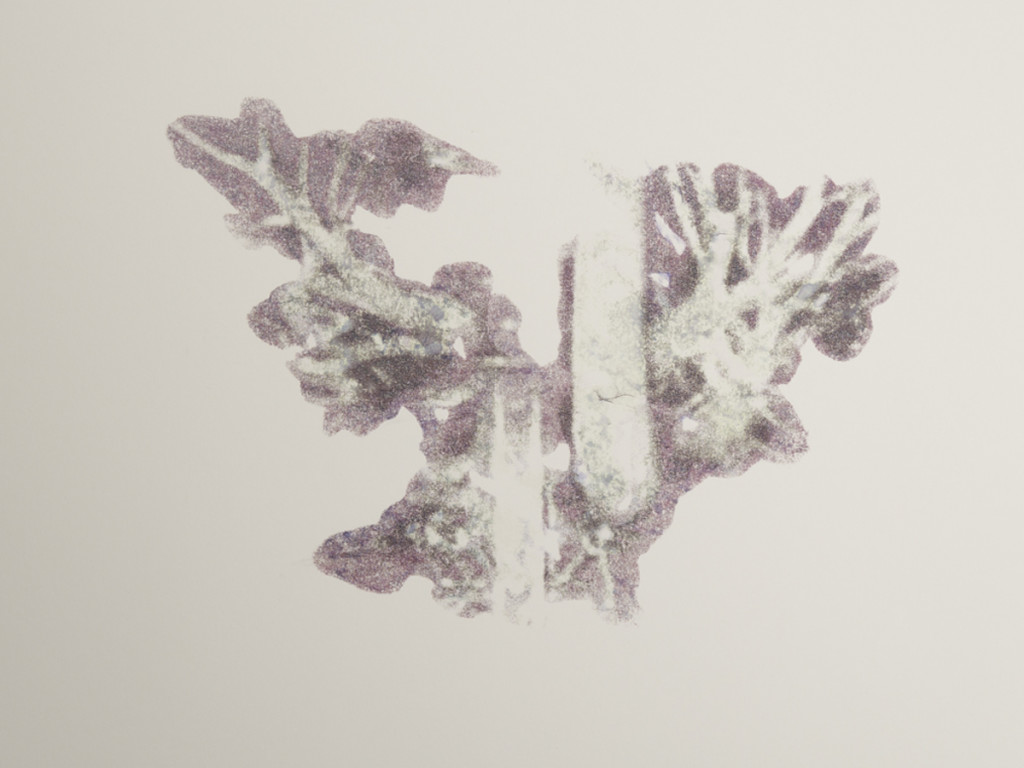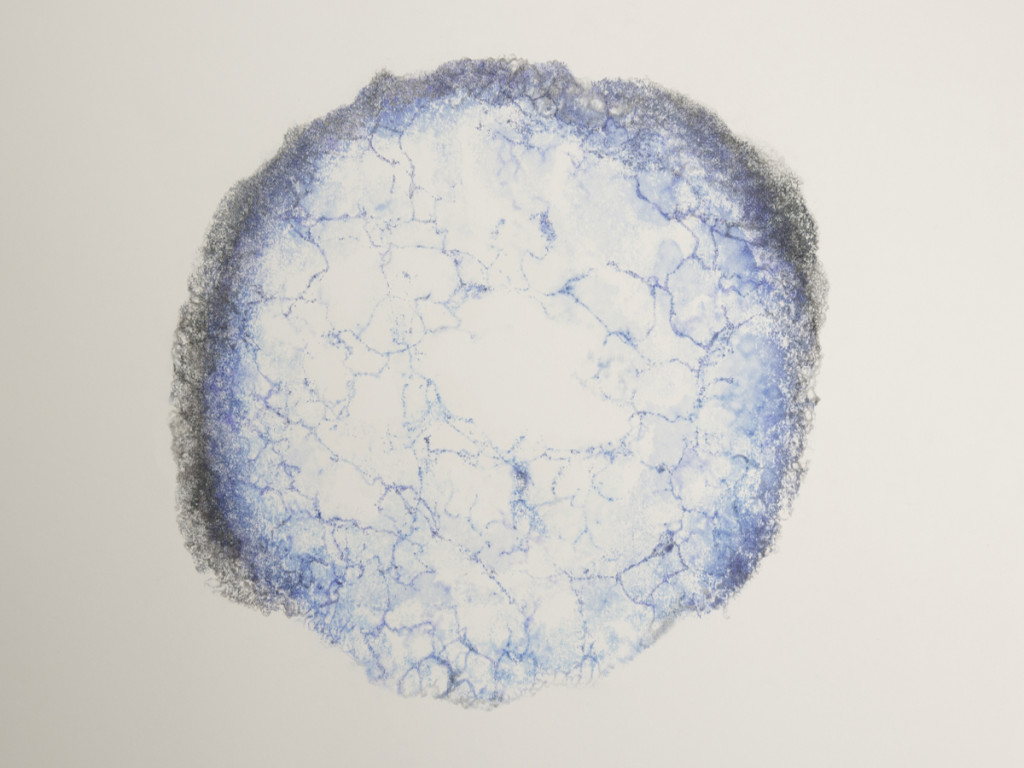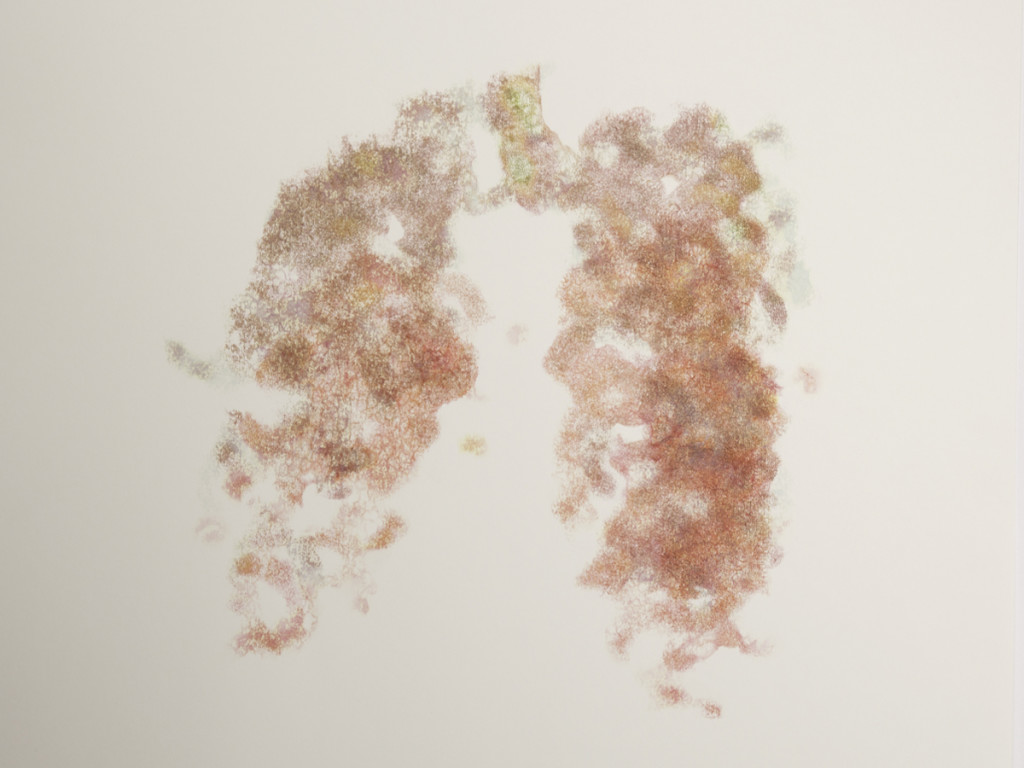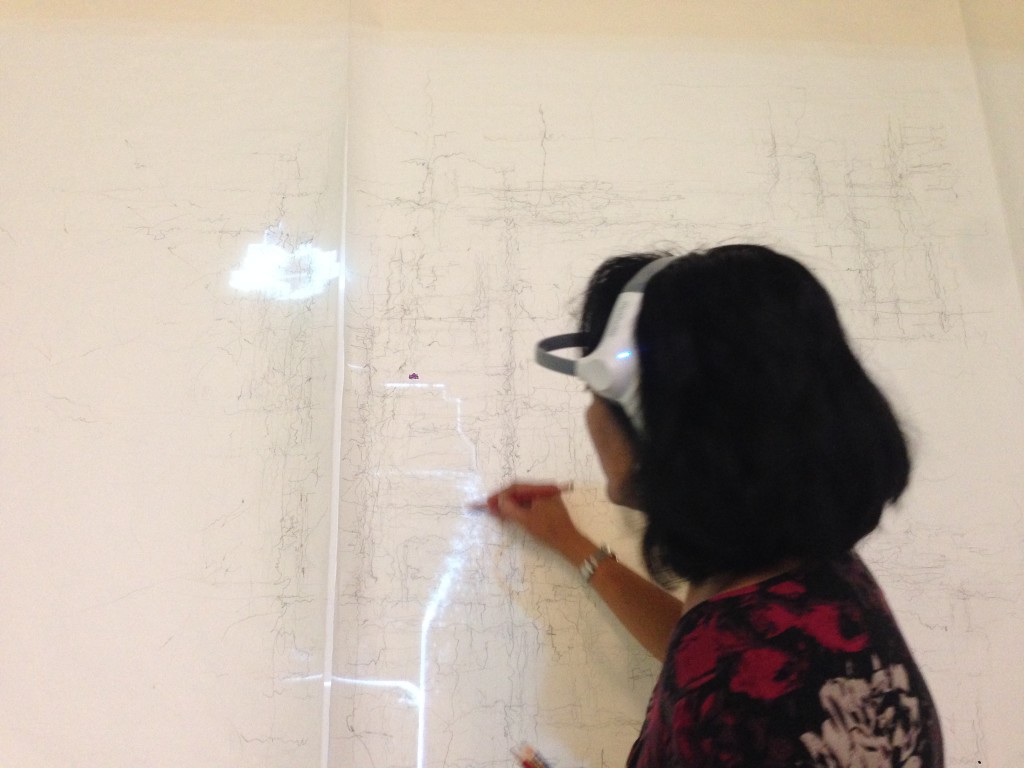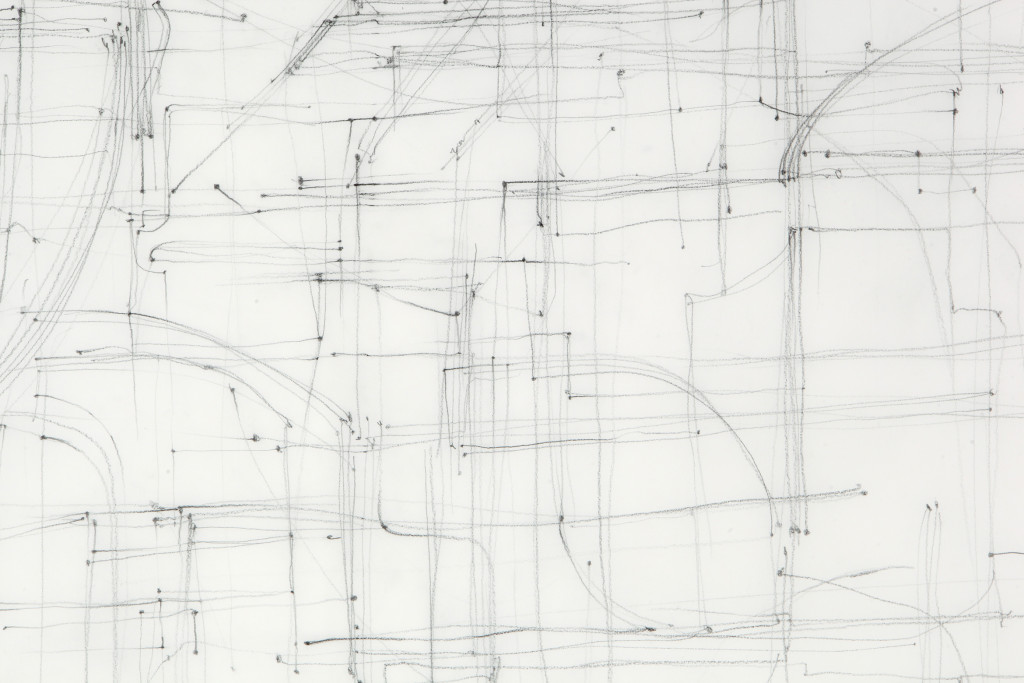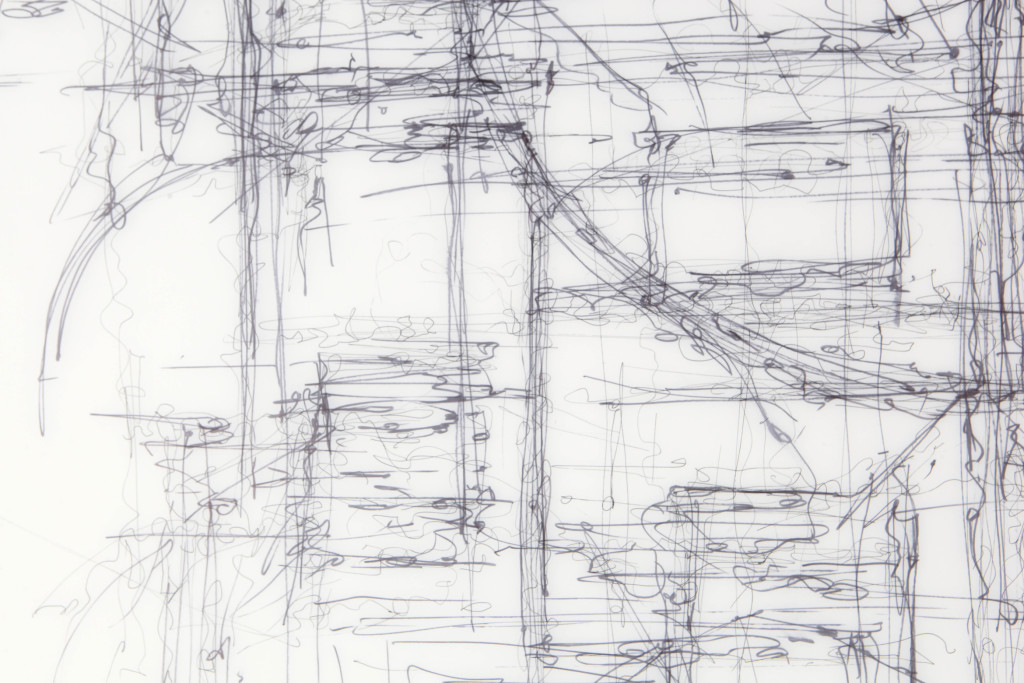by Daksha Patel, February 2016, Silent Signal Symposium.
My practice engages with medical visualisation technologies, and this presentation reflects upon two projects: an art/science residency in medical imaging at the University of Manchester, and drawing performances with biosensors at FACT, Liverpool and Cornerhouse, Manchester. Both projects explore the visualisation of data captured from or about the human body, and I am particularly interested in the ruptures in data – the concept of ‘noise’. Noise in medical visualisations is widely understood as unintentional, unverifiable, or unknown signals generated by the human body or technologies during the process of data transmission. It is expressed as patterns of visual interference and body movement is one of the principal causes of noise.
Both external and internal body movements are implicated in the generation of noise; the physiological functions of the body, such as the respiratory, circulatory, and digestive systems generate noise. Furthermore, the bodies of technologies – the hardware itself – are also implicated. All matter vibrates, and in this sense, the distinction between bodies and technologies dissolves.
What constitutes noise and what constitutes signal in medical visualisations is unstable and changes over time as scientific understanding evolves. In this sense, noise is closely linked to recognition and how one looks: ‘If an image (or a word) were completely new, how would we recognise it? It is this moment of recognition that makes the image readable as such,’ (Mitchell, 2015).
There is a historic relationship between looking and knowing in medical science; it is a relationship that noise disrupts.
Imaging scientists spend a lot of their time intensively focused upon the act of looking. They are highly visual people. There is a shared process of selecting, isolating and framing areas of visual interest with the artist. Searching for patterns to emerge is central to scientific practice, and as Sian Ede (2000) observes: ‘In turn patterns suggest new concepts. Reason and logic, the detective work implied in “the scientific method” play an important part but it comes as a surprise to learn how much scientists need to see or visualise ideas in order to understand’.
During my residency, I became interested in processes of indirect measurement.
Probability patterns, estimation and interpolation (which is the method of constructing new data points from within a set of discrete sets of known data), are all implicated in some way in medical visualisation processes. Measurement systems are not always comprised of fixed and stable units, but stochastic – that is, they involve a ‘random variable’, and as such, are themselves noisy.
But there are other ways of thinking about noise. Sound artists, cultural and media theorists conceptualise it as ‘resistant to the status quo’, and as ‘a force for change’ (Hainge, 2013). It is understood as something productive, generative, and potentially creative. Noise is a dynamic phenomenon, which is characterised by its relational status: ‘it does not exist independently; it exists only in relation to what it is not. In turn, it helps structure and defines its opposite’ (Hegarty, 2007)
My drawing performances with biosensors experiment with these ideas. The sensors, which are designed for the consumer market, are designed to visualise data in the form of graphs or a continuous oscillating line. A creative coder programmed the data to follow pathways dictated by my drawings of the spaces where the performances took place. Live signals from sensors (worn by a participant and myself) were projected onto a large sheet of paper upon which I attempt to trace the signals. However the interaction between the two sensors – this is the glitch in the system – triggers unexpected changes in their pathways by altering the speed, direction and intensity of the projections. The constant changes in direction and speed of the projected line, make this a challenging task! Ultimately, both projects experiment with drawing processes that involve unknown, unpredictable or unintentional movements. They engage with noise as a phenomenon, as opposed to noise an abstract concept.
Daksha Patel is an AHRC funded practice-led researcher at Northumbria University. Her practice is concerned with digital systems that are used to scan and map the human body, and she is particularly interested in medical visualisations. The process of drawing is central to her practice. She draws with materials that are unstable and fugitive such as oil, animal fat, latex and clay, as well as more traditional materials such as graphite on paper.
Her work is exhibited nationally and internationally, and she regularly undertakes residencies in scientific institutions. Recent exhibitions include the Museum of Science and Industry, Manchester; John Rylands, Manchester; Touchstones, Rochdale; Imperial War Museum North, Salford; and the National Taiwan University of Arts, Taipei.
Daksha is a visiting artist/lecturer at UCA (University for the Creative Arts) and MMU (Manchester Metropolitan University).

